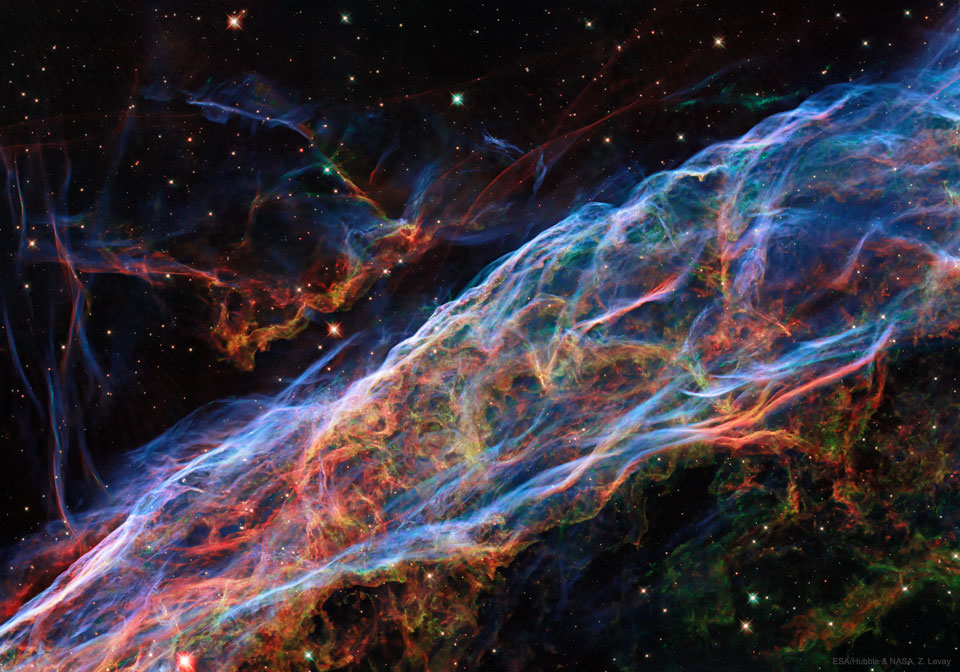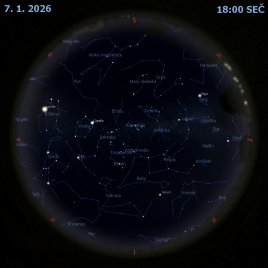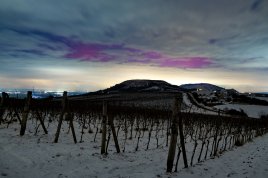Závojová mlhovina: Cáry vybuchlé hvězdy

Uznání: ESA/Hubble & NASA, Z. Levay
Cáry jako jsou tyto je vše, co zůstalo po hvězdě v Mléčné dráze vidět. Tato hvězda asi před 7000 lety vybuchla jako supernova a po sobě zanechala Závojovou mlhovinu. Tehdy bylo rozpínající se mračno trosek nejspíš jasné jako srpek Měsíce a pro lidi, kteří žili na úsvitu psané historie, zůstalo viditelné po týdny. Výsledný zbytek supernovy je dnes též známý jako Smyčka v Labuti, už zeslábnul a je nyní vidět jen malým dalekohledem namířeným do souhvězdí Labutě (Cygnus). Pozůstalá Závojová mlhovina je fyzicky obrovská, ale i když se nachází asi 1400 světelných roků daleko, tak na obloze pokrývá něco přes pět úplňků. Obraz je mozaikou šesti snímků z Hubblova kosmického dalekohledu, který dohromady pokrývá pouze asi 2 světelné roky, což je jen malá část rozlehlého zbytku supernovy. Na snímcích celé Závojové mlhoviny ani pilný čtenář nemusí tyto filamenty identifikovat.
Seznam odkazů v popisu
- NASA: Supernova
- SkyHound.com: The Veil Nebula
- APOD: 2001-09-28 NGC 6992: odlesk závoje
- APOD: 2012-02-05 Lunace
- BBC.co.uk: Earliest writing' found
- APOD: Supernova Remnants
- APOD: 2020-09-28 Filamenty ve Smyčce v Labuti
- Youtube.com: Veil Nebula, zooming on
- Youtube.com: Hubblecast 07 - Uncovering the Veil Nebula
- Wikipedia: Constellation
- Wikipedia: Cygnus_(constellation)
- Wikipedia: Veil
- Wikipedia: Veil_Nebula
- Harvard.edu: Chandra: Note on Cosmic Distances
- APOD: 2016-02-01 Najděte člověka na Měsíci
- ESAHubble.org: Return to the Veil Nebula
- NASA: Hubble Space Telescope
- NASA: What Is a Supernova?
- APOD: 2019-10-31 Duchovitá Závojová mlhovina
- 123rf.com: Foto: Pes čte knihu :-)
- Apod.com: Discussion forum
NASA Official: Phillip Newman Specific rights apply. NASA Web Privacy Policy and Important Notices
A service of: ASD at NASA / GSFC & Michigan Tech. U.
Odkaz na originální APOD


